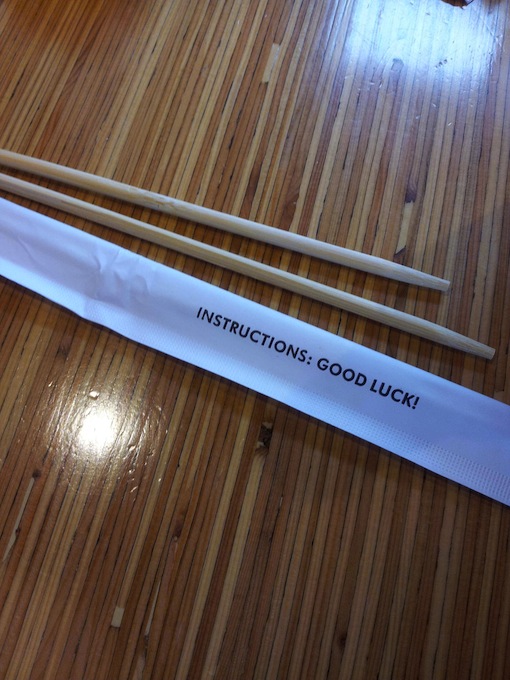For the month of August, a series of guest posters will be filling in on DWL with daily posts. This week’s posts come to you from the talented folks of Studio 254: designer and illustrator Will Bryant, illustrator and educator Kate Bingaman-Burt, designer Clifton Burt, designer Tina Snow Le and artist, designer and educator Jason Sturgill. Enjoy!
The form and function of utensils is rooted in various intuition, culture and resources. For some, the purpose of utensils can define one’s identity where it’s shaped by the pressures of institutional or communal society – from the cafeteria lunch table, professional dinner a Michelin star restaurant, or meeting the parents for the first time. Overall, you’re expected maintain a certain etiquette to properly enjoy and respect a good meal, right?
An instrument that can really make or break a meal is the Chopstick, due to its steep learning curve and eloquent behavior anticipated when used. The design of the Chopstick doesn’t make it as intuitive to use as it’s western counterparts…it requires coordination, patience, and practice to learn. The Chopstick was originated in ancient China, and evolved from twigs used for cooking and serving food. Since the Chopstick was first introduced, Vietnam, Korea, Japan and a few other countries have adopted the utensil in their everyday life.
- How Not To Use Chopsticks
Confession: I’ll admit that I don’t hold Chopsticks properly myself. I don’t hold the chopsticks like pencils or however the heck the instructions tell you to do so. I hold them as if my life depended on them to survive…with a tight grip and awkward gesture of my index finger being the only part that moves. They look like baby stilts between my fingers. I’ve tried following the instructions to this day on the back of Chopstick wrappers and it just doesn’t work for me…and I’m okay with that! My grandpa will call me out at times saying how awkward I hold my chopsticks, but hey, at least it gets the job done!
Learning how to use Chopsticks for the first time is an experience in itself and perhaps it’s the only utensil that requires some type of instruction before use. There may be over hundreds of tutorials on how to properly use chopsticks, but does anyone follow those rules anyway? If they did, there wouldn’t be variations of the chopsticks that are glued together, taped together, or molded together for folks who want to use Chopsticks but aren’t able to. Training chopsticks make it more awkward to learn how to use them. The evolution of the design of the Chopstick isn’t getting simpler, it’s getting more complicated as the instructions keep changing. As Ira Glass says, “Hard work bridges the gap between taste and ability.” As we engage with Chopsticks, whether it’s for the first time, or the millionth time, we build that bridge in a conventional or modified fashion…suited to each individual. A how-to illustration on the back of a Chopsticks wrapper won’t tell you that. That is the real instruction we’re intended to learn.

Get 300+ Fonts for FREE
Enter your email to download our 100% free "Font Lover's Bundle". For commercial & personal use. No royalties. No fees. No attribution. 100% free to use anywhere.



